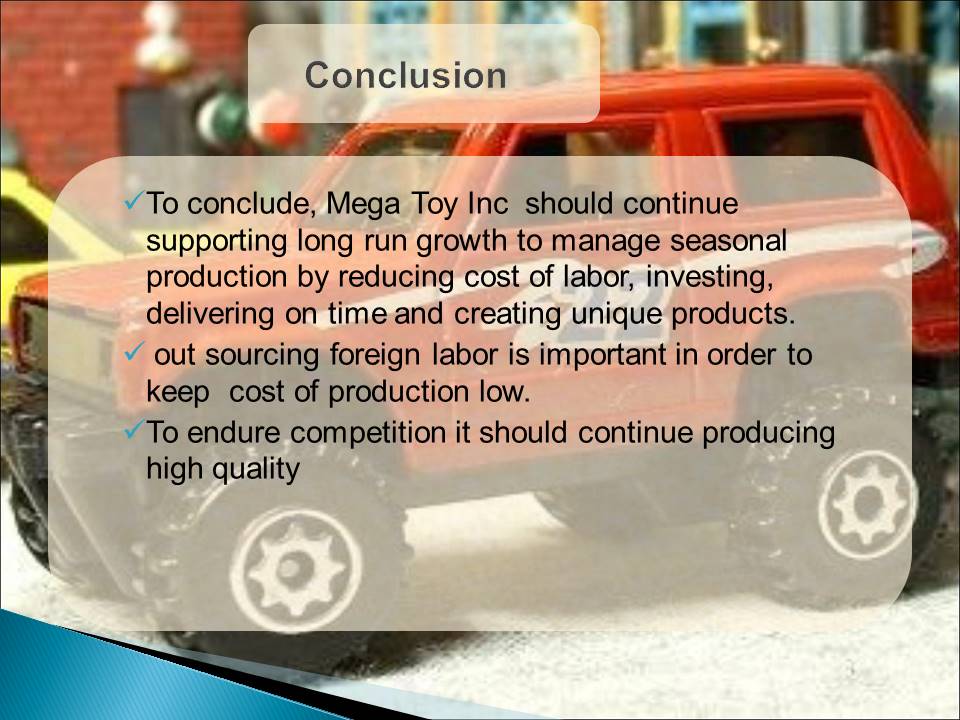Introduction
- Woo family (Peter, Charlie, Jack and Hsu woo) emigrated from Hong Kong to the U.S in the 1960s.
- They recognized a market for toys in Los Angeles that could be served by toy manufacturer in Hong Kong and founded ABC toys Inc (McGuire et al., 2011).
- Peter an Charlie are founders of Los Angeles toy district.
- In 1989, Charlie and peter left ABC toys Inc and created Mega toy Inc.
- Jack and Hsu Woo remained with ABC toys now competitor to the new firm.
- Mega toy Inc is an importer and wholesalers of children toys.
- Peter became president and Charlie C.E.O.
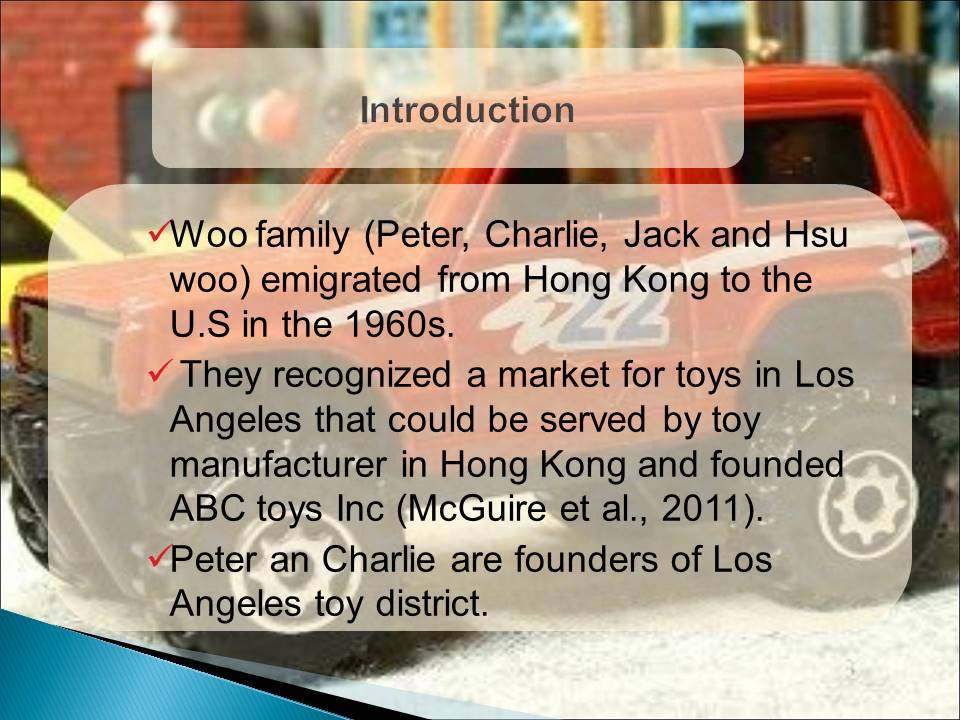

External environment
Industry trend
- Mega Toys Inc has become better company through its constant upgrade of their system and improvement of business practices
- Has supplied Wal-Mart with toys for more than twenty years.
- Through out the 1990s, it transformed from a buyer/ importer to a toys, character and brands.
- Mega Toys eventually developed two business models; designing and subcontracting.
- Between 1970 and 2000, retail toy sales had to consolidate as large discounts stores and became the main toy sellers in America.
- Mega Toys designed most of its products in Los Angeles and subcontracted manufacturing firms in china and Hong Kong in order to keep cost low.
- In 1993, it acquired 50 percent of Los Angeles based California costumes collections Inc (CCC); a producer of high quality Halloween costumes.
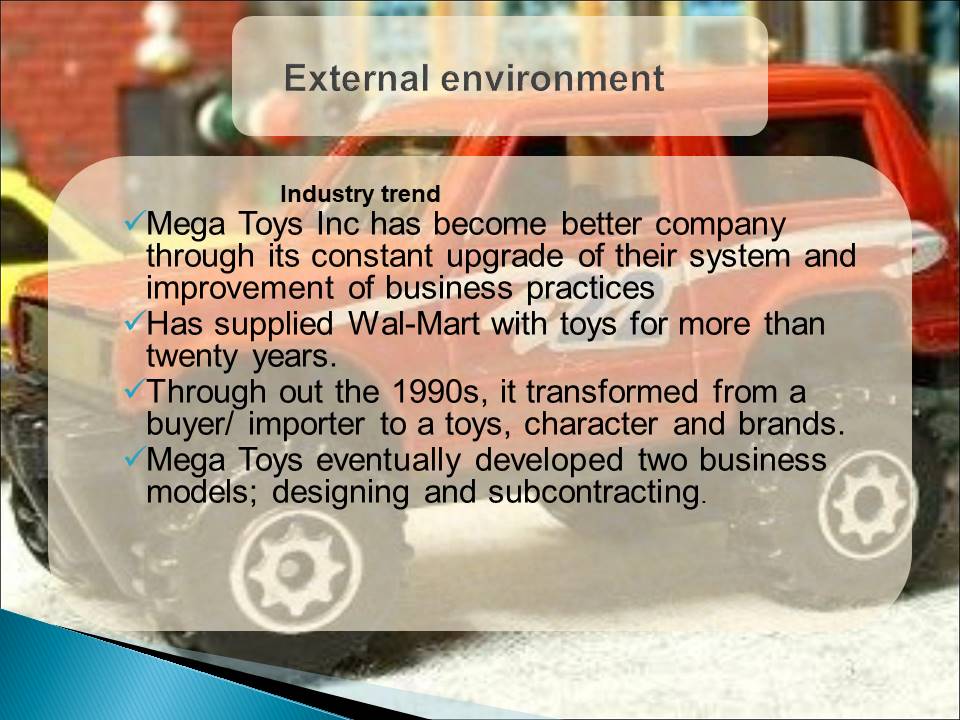
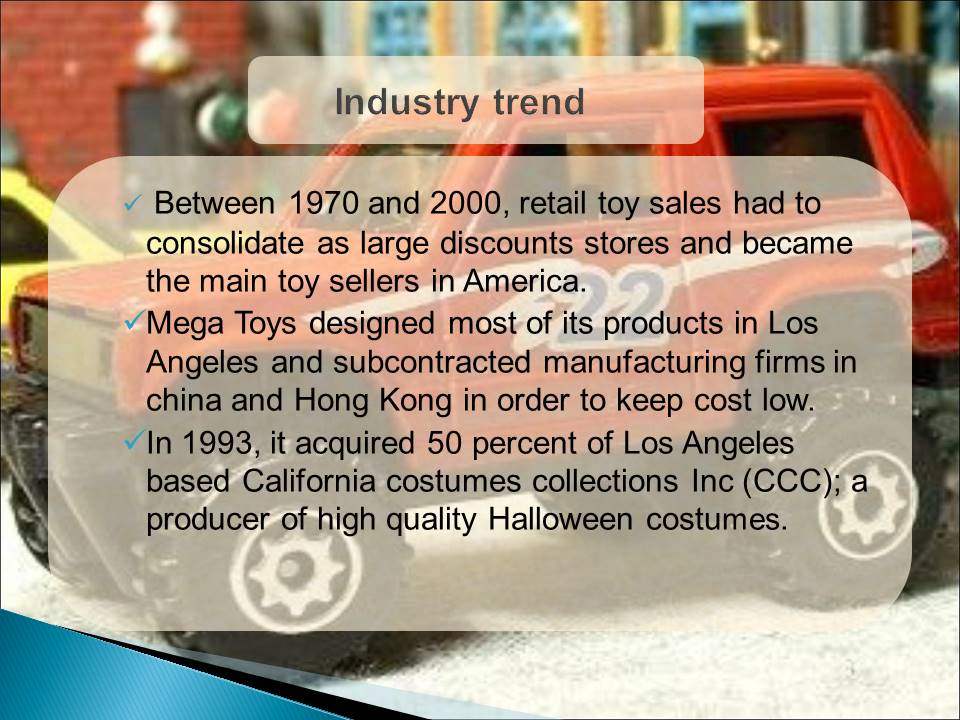
Opportunities
- Increasing business opportunities in Asian countries.
- World trade organization reiterating on its prior regulation on costumes.
- Mardi gras costumes merged with CCC and in 1998, Mega Toys controlled CCC as a wholly owned subsidiary (McGuire et al., 2011).
- The industry had always been characterized by high seasonality, with the Christmas season representing the bulk of sales.
- The market for traditional toys world wide was mature and shrinking, while electronic, computer based and some specialty toys and games showed growth.
- Number of other holidays, differing from country to country, allowed toys makers and retailer to spread revenue over the calendar year.
- High growth in infrastructure
- Developing infrastructure in China and Asian
- Economy growth is part of opportunities for the company
- Costumes are almost exclusively sold at Halloween and toys are sold primarily before Christmas.
- In 2008, world Easter’s costume sales was expected to climb up to $ 2.2 billions (McGuire et al., 2011).
- Traditional holiday, social, sports or educational events and celebration provides sales opportunities.
- Each season has particular gifts preferences
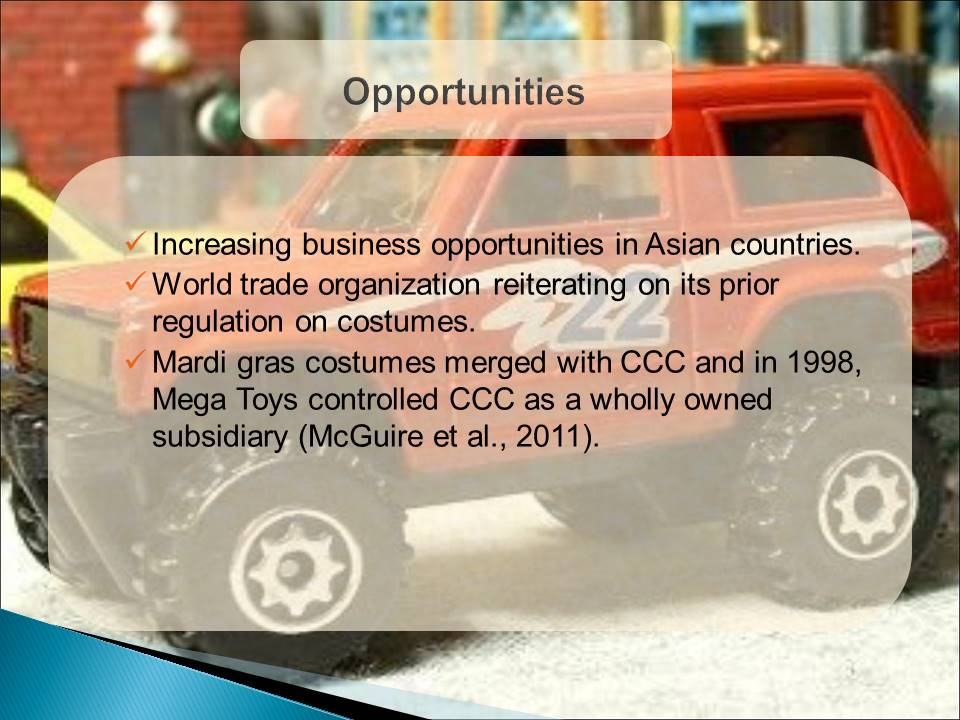
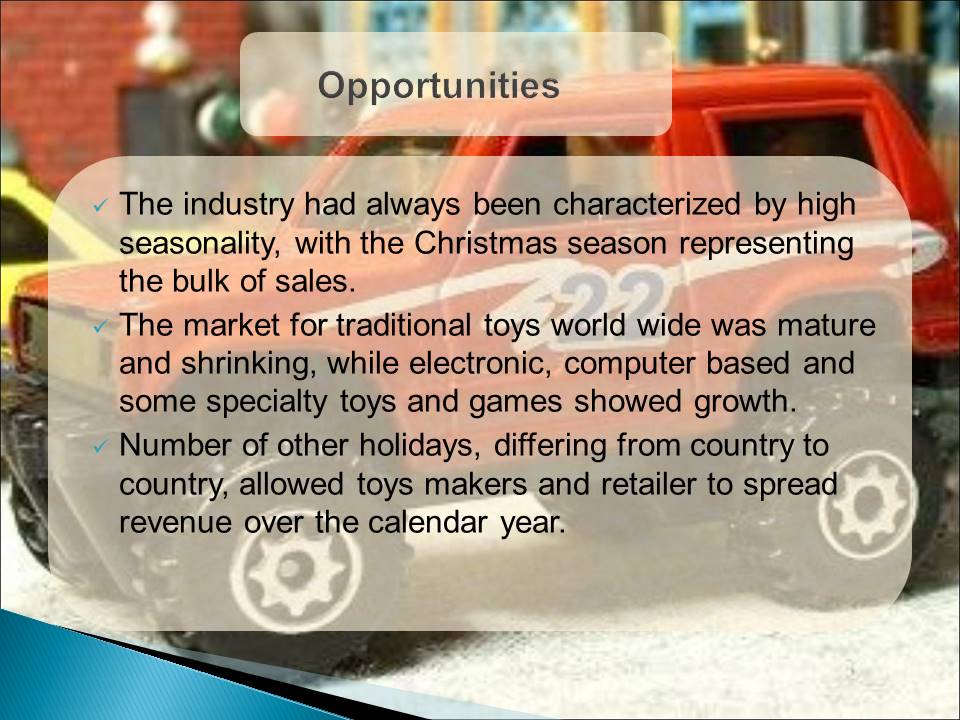
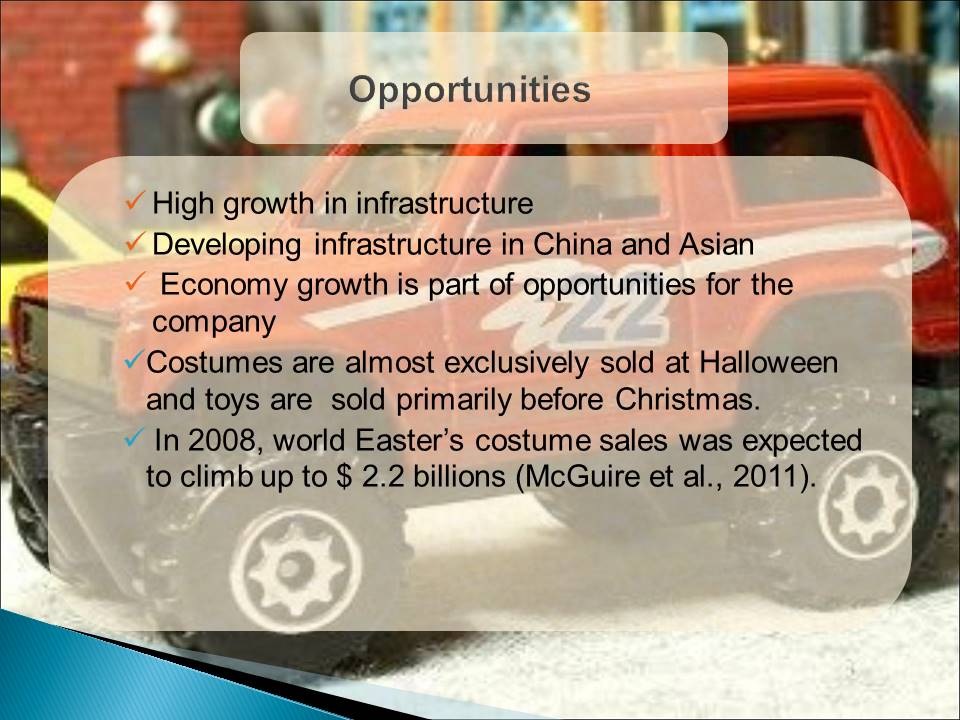
Threats
They include:
- Economic crisis in the U.S and Europe
- Safety concerns
- Children alternatives for hobbies
- Stiff competition.
- Toys and games production was largely controlled by major, global toy maker such as mantel and Hasbro in traditional toys, and Sony, Nintendo, and others in high tech toys and game console.
- Seasonally brought with it the potential for high profits, but also the risk that a given toy supplier could not meet demand on time. Christmas toys that arrived after Christmas were simply unacceptable to toy seller and consumer.
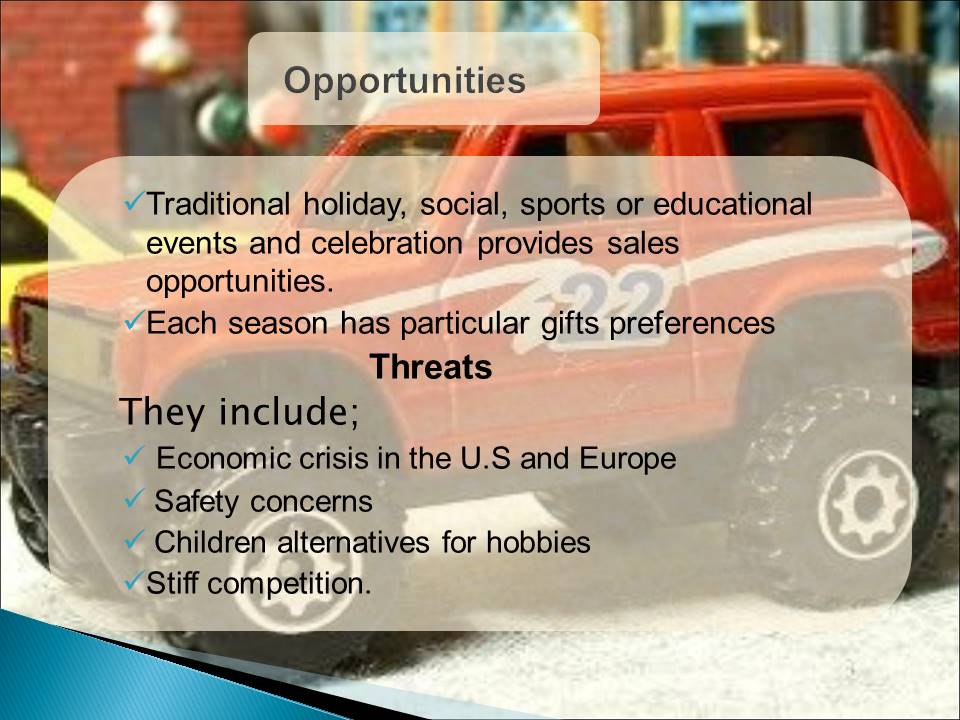
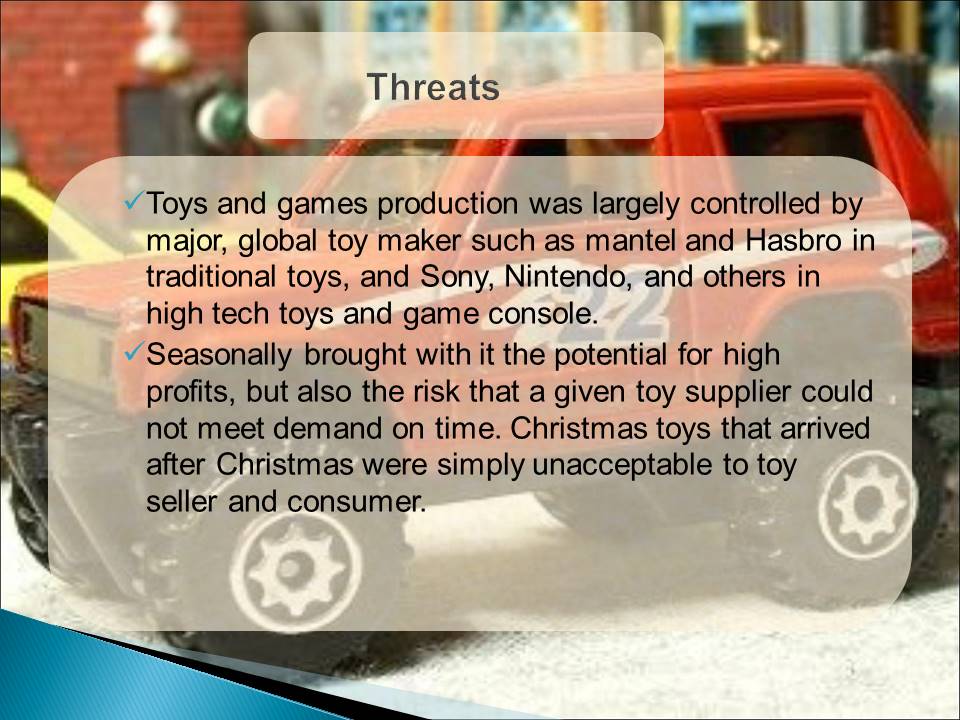
Forces
They include:
- Low cost of production through out sourcing job at low cost in foreign countries.
- Hiring seasonal employees.
- Manufacturing products near ports.
- Delivering its products on time.
- Deals with licensed products thus reducing cost of advertisement.
- Ensuring products are of quality and provide intellectual.
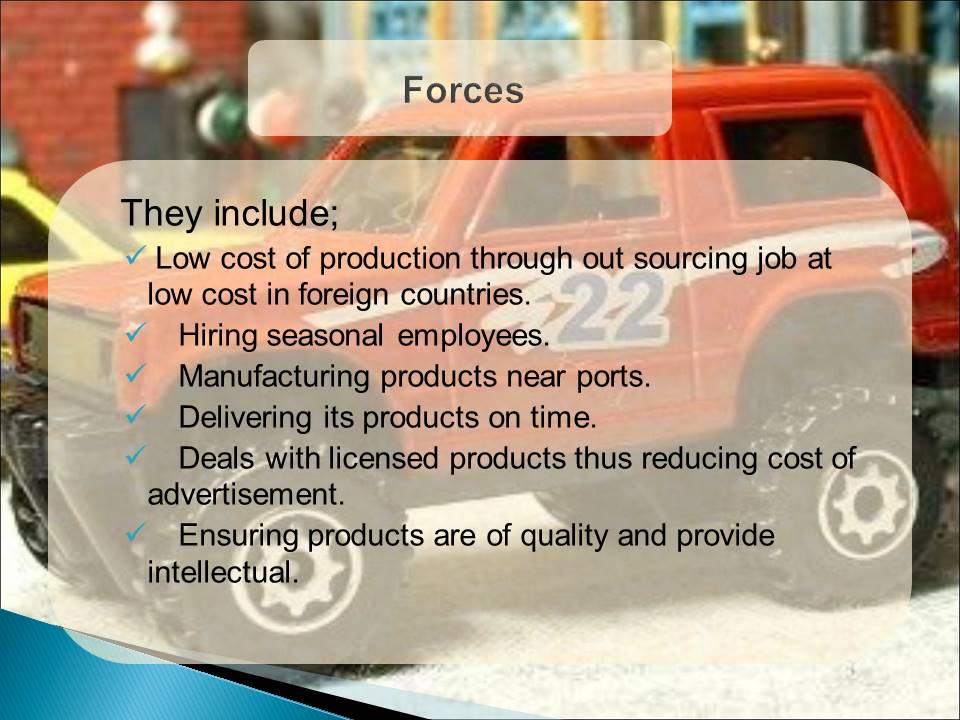
Internal organization
Strength and care competencies
- Mega Toys Inc ensures that it has patent, high quality and unique design.
- Its head quarters are located near the port.
- Low shipping costs
- Outsourcing
- Low products cost
- Good reputation
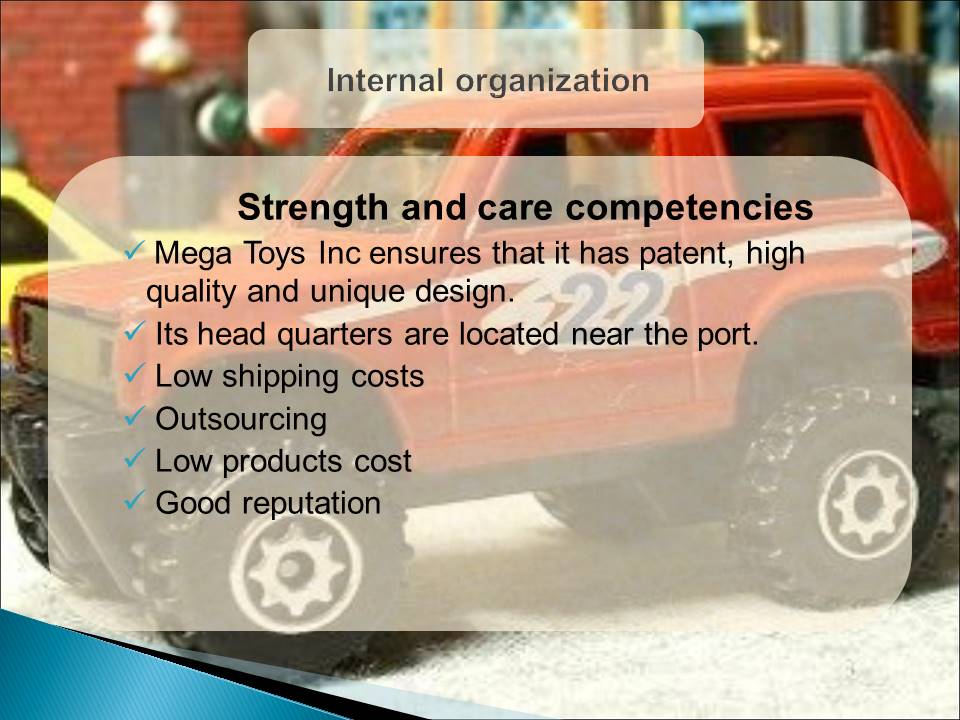
Strengths
- Acquiring licenses and managing licenses contract became critical if mega toys wanted to sell to wall mart; Since the retail wanted high quality, branded, unique, and low cost licensed products, mega toys needed to acquire licenses(Anderson, Sweeney, Williams, & Eddie, 2010).
- There is excellent network of seasonal employees and logistics help, and close to toy district and community
- Delivery on time
- Friendly relationship with retailer like Wal-Mart
- Use of seasonal employees.
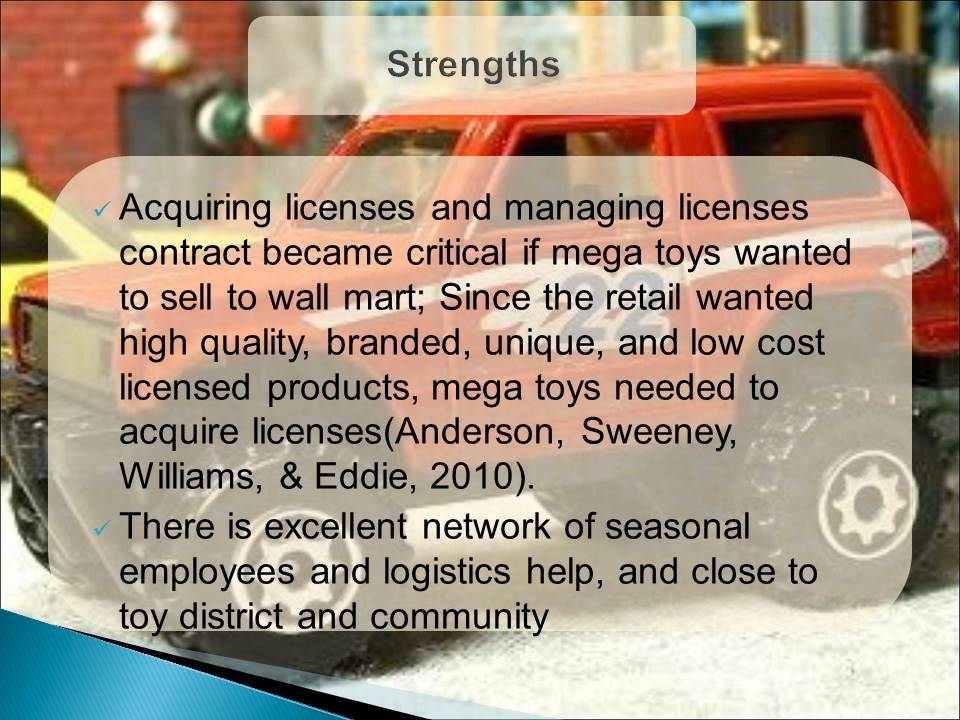
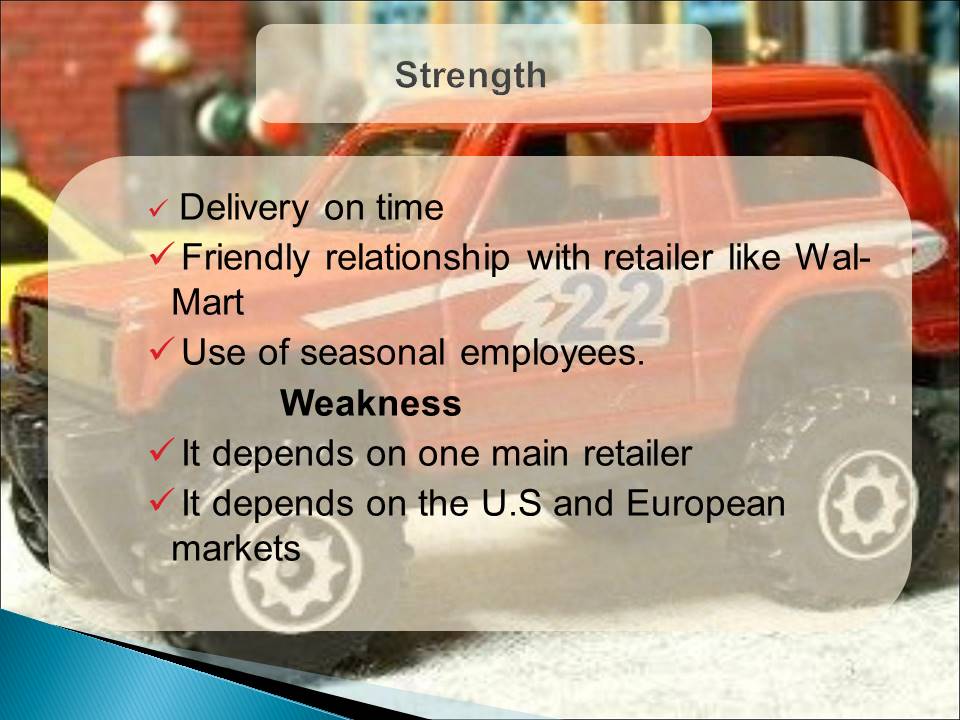
Weakness
- It depends on one main retailer
- It depends on the U.S and European markets
- Some goods are returned from logistic process.
- It depends on one main product (Easter basket)
Strategy evaluation
- Mega Toy’s strategy include supporting long run growth to manage seasonal production by:
- Reducing cost of labor
- Investing
- Delivering on time
- Creating unique products.
- It uses low cost employees by out sourcing its work force from foreign countries.
- It produces high quality products which has made it hard for its competitors to initiate and keep up with the competition.
- Its products are licensed, high quality and unique in design.
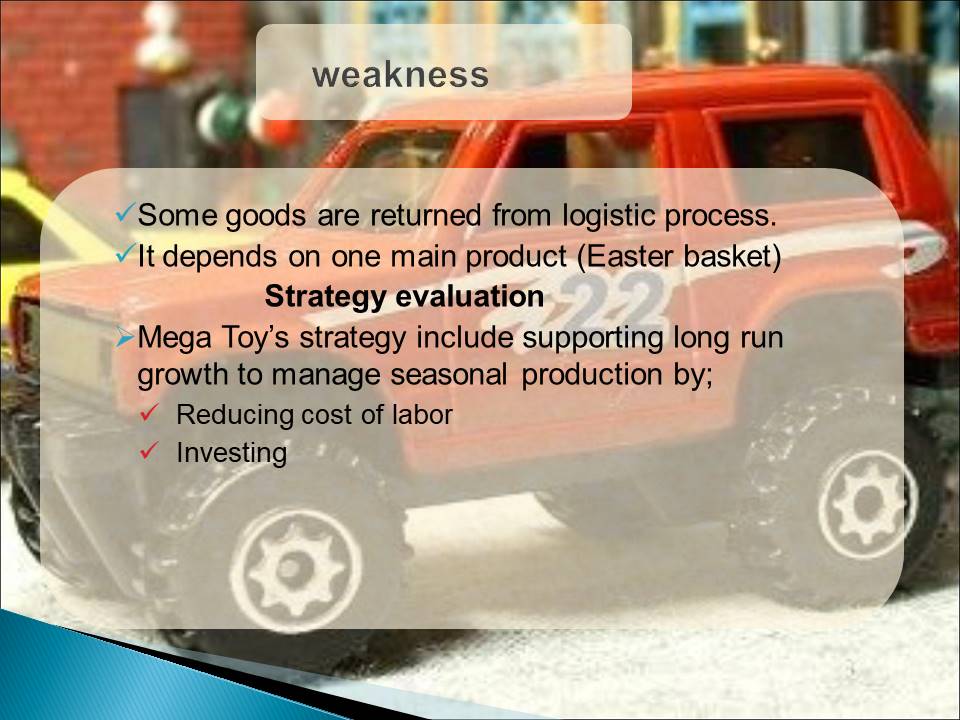
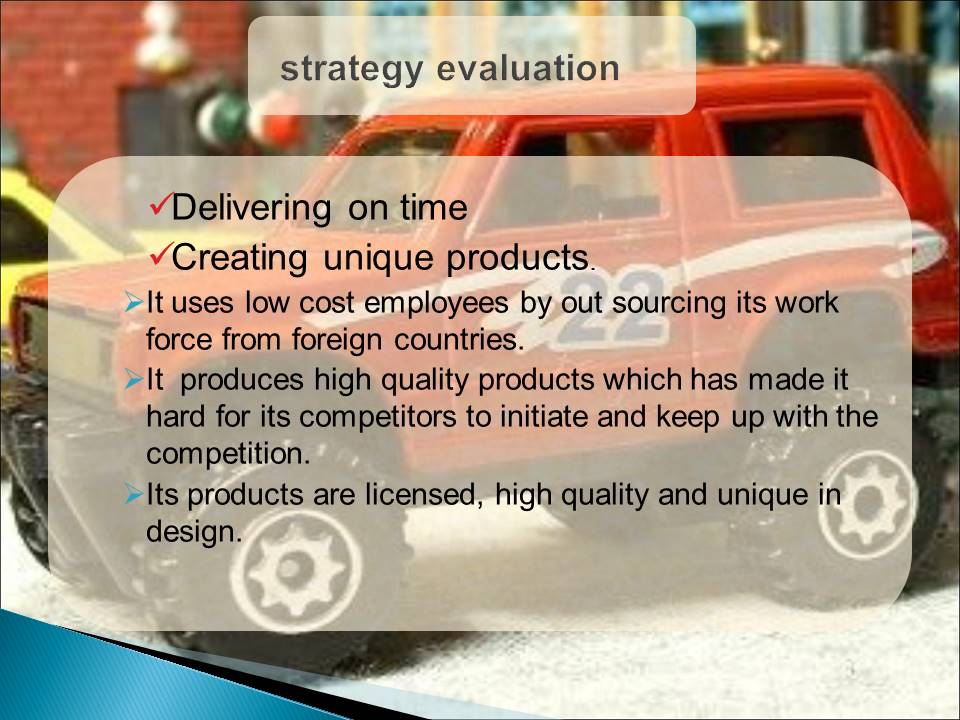
- It ensures on time delivery.
- Due to competition Mega Toy Inc has expanded its product line to other toys such as Hasbro, Inc.
Recommendations
- To thrive and penetrate in the market Mega Toy has to keep on selling existing product in current market.
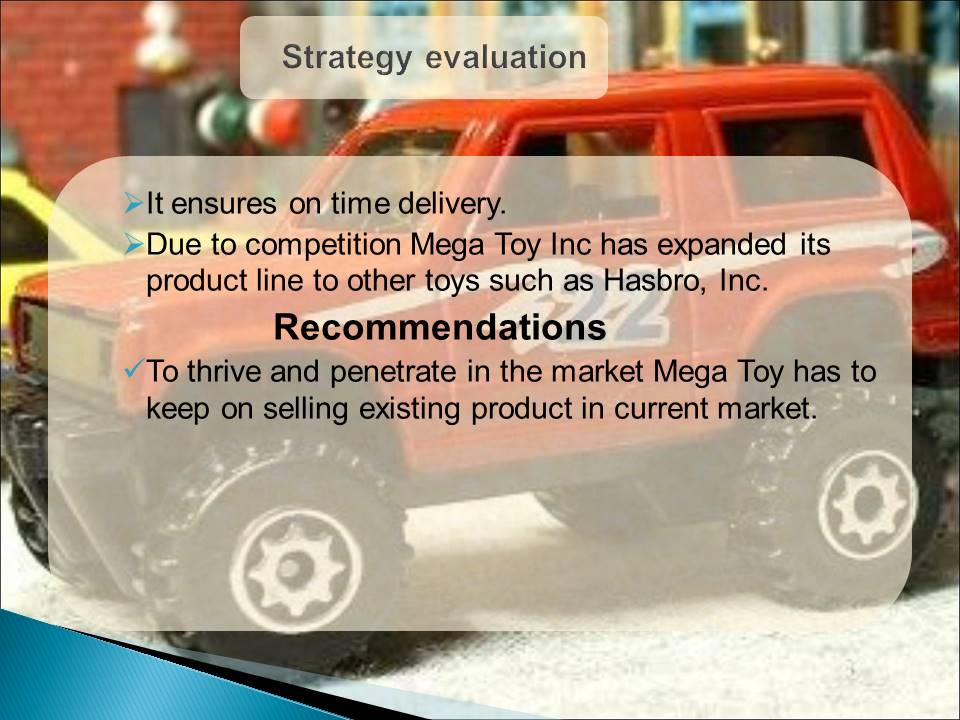
- It should advertise to remind customers of product.
- It should contact other retailer besides Wal-Mart
- It should achieve market growth through selling its existing products in new market like Asian countries (Vietnam, china and Pakistan) besides manufacturing in those countries.
- To ensure product growth, it should develop new products and sell them in current market.
- It should increase product line to produce digital toys, electronic games beside traditional products.

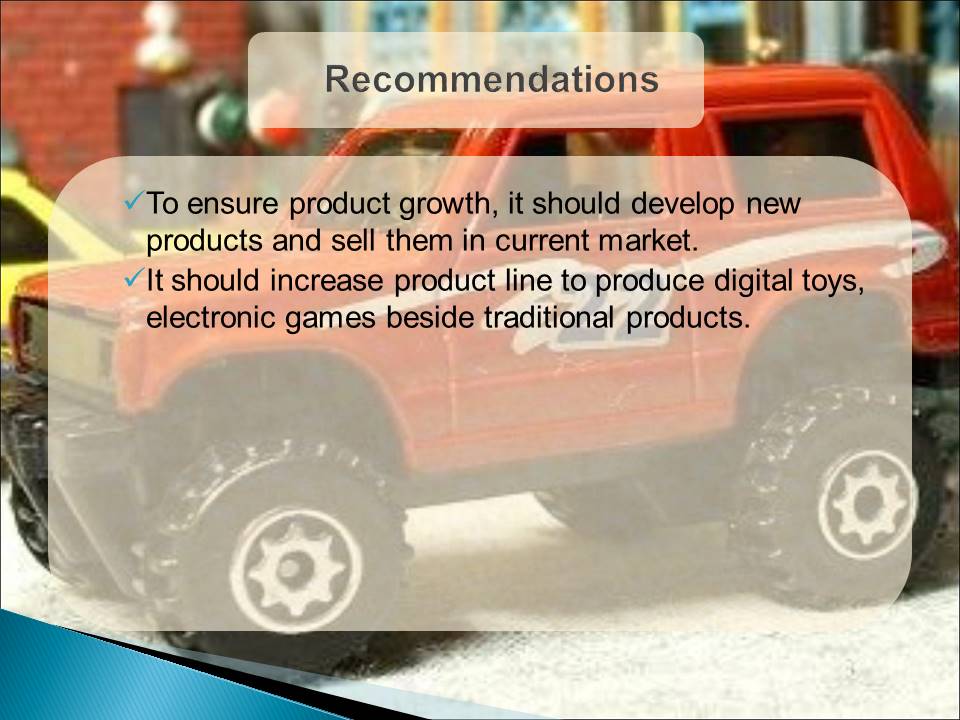
Conclusion
To conclude, Mega Toy Inc should continue supporting long run growth to manage seasonal production by reducing cost of labor, investing, delivering on time and creating unique products. Out sourcing foreign labor is important in order to keep cost of production low. To endure competition it should continue producing high quality.
